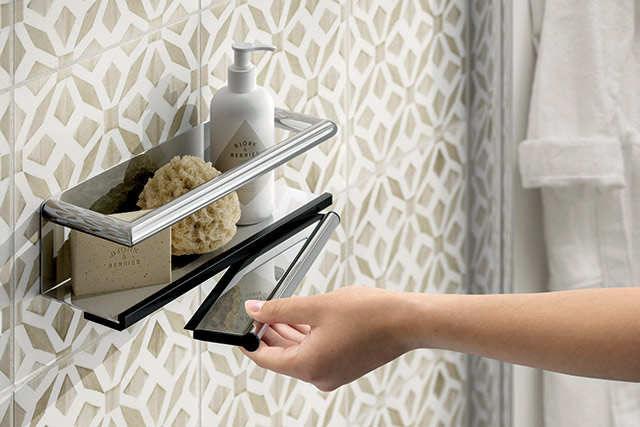
Bringing bathrooms to life
We explore the bathroom accessories market and ask why these products, still sometimes overlooked by retailers, are so crucial for selling aspirational designs?
Words: Francesca Seden
Driven by a combination of economic factors, social media influence and greater awareness of products on the market, homeowners are taking accessories increasingly seriously.
In times of economic difficulty, accessories are a great way for consumers to update the bathroom if there isn’t the budget available for a whole new suite. And, for retailers, accessories are an easy add-on that offers extra margin and requires minimal space on the shopfloor.

Our contributors this month unanimously agree that accessories are crucial for selling aspirational bathrooms, as they can change the look and feel of a bathroom, tying the scheme together, and they offer a simple way for homeowners to experiment with new styles and trends, without having to commit too heavily.
The standout aesthetic is for coordination and colour-matching between accessories, hardware and brassware for a cohesive, streamlined look.
Thomas Griffin, UK key account manager at Furnipart goes further with this statement, adding that the bathroom is no longer “a standalone aesthetic”, but that “kitchen, bedroom and bathroom manufacturers are overlapping disciplines so that you can easily continue a theme or design throughout the home by subtly changing colours or handles, while keeping the design concept overall, from one room to another”.
Finishes most favoured still include matt black and muted warm metallics, but also a return to cooler tones of silver and stainless steel. Textured accessories are in, as well as arch- and pill-shaped mirrors.
So, what are the key considerations for designers and retailers when designing with, and selling accessories?

Firstly, as we’ve already touched on, these products are an easy add-on, with the possibility of creating extra margin, particularly if a consumer doesn’t have the budget for a new suite. They also offer a straightforward way to update the showroom and the window display, which could help draw in more custom.
Plus, they also offer a “brilliant upsell opportunity” as Tim Bohmann, direct category manager at Dornbracht, notes, “particularly where customers are keen for a coordinated look with bathroom fittings.”
He adds that stocking up on a wider range of coordinated design elements will allow designers to create a harmonious balance – from washstand fittings and the shower and flush plate to the WC, soap dishes, tissue holders and towel rails.

It’s crucial to offer plenty of choice, with cohesive collections on offer, as well as asking for customer feedback. This can be invaluable for helping to hone your product offering.
Retailers should also consider ways to inspire consumers by showing products they might not otherwise think of. “Space saving over-shower hooks,” says Crosswater brand expert, Richard Ticehurst, “are a great addition to any modern bathroom, creating extra space both in and out of a shower, especially if they have a hook design on each side.”
As House of Rohl head of marketing communications, Nigel Palmer, comments: “Designers and consumers are more aware of the breadth of choice, and there is a growing recognition of the importance of quality in bathroom accessories. Cheaper fittings often deteriorate quickly in the bathroom.

“The trend for warmer finishes in brassware has extended to hardware and it can be difficult to match brass finishes from different manufacturers, so if this is an important part of the design check up front if the preferred brassware collection includes a comprehensive set of accessories.”
Sales pitch
Including accessories in the initial design stage means there’s little chance of them being overlooked.
Charlotte Tilby, head of marketing at Woodstock Trading Co, says: “Even if a customer doesn’t notice these small elements at first, they will make all the difference in creating the feeling of a more elevated and aspirational space. Just as you would match shoes to a handbag, coordinating bathroom accessories create a seamless and polished look.”

To sell accessories effectively, especially if they’re relatively expensive, it’s key that brands offer tools to retailers to help them explain the benefits and showcase the products in their best light. Things like samples boards, brochures, POS materials and proper training can all help.
Jasmine Rowe, product designer at HIB, says that accessory boards offer a great way to showcase different finishes to allow the customers to check that the product matches to other metallic elements in the scheme.
As Hansgrohe UK’s brand and communications manager, Emma Freeman concludes, “once the seed of sleek coordination across a scheme is planted in the showroom, it’s difficult to settle for less”.







